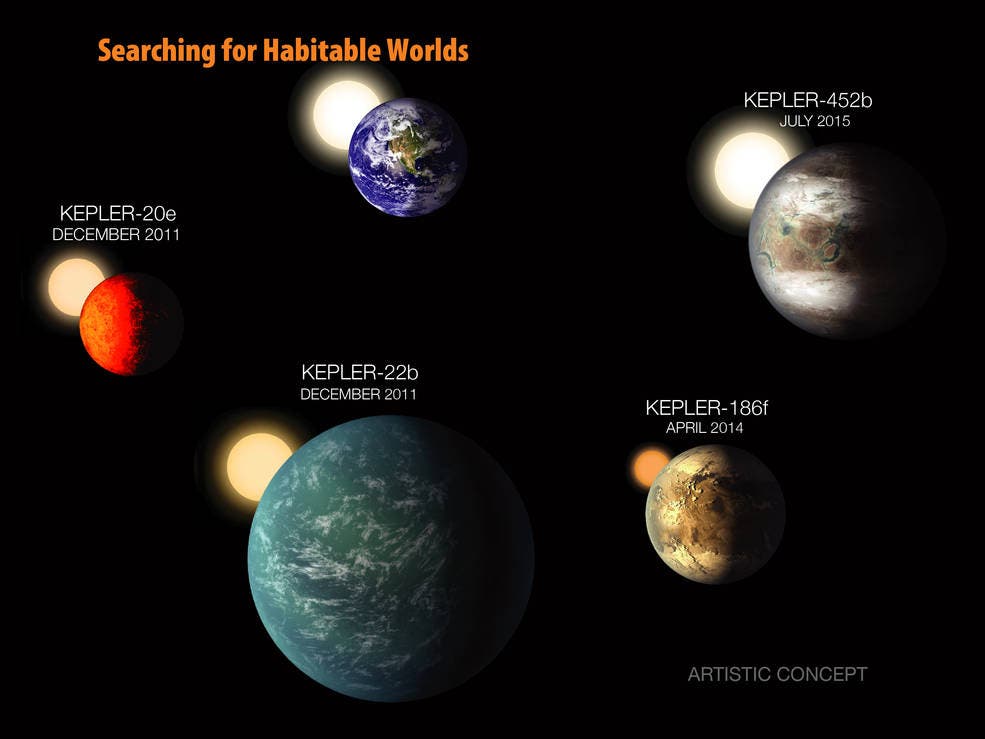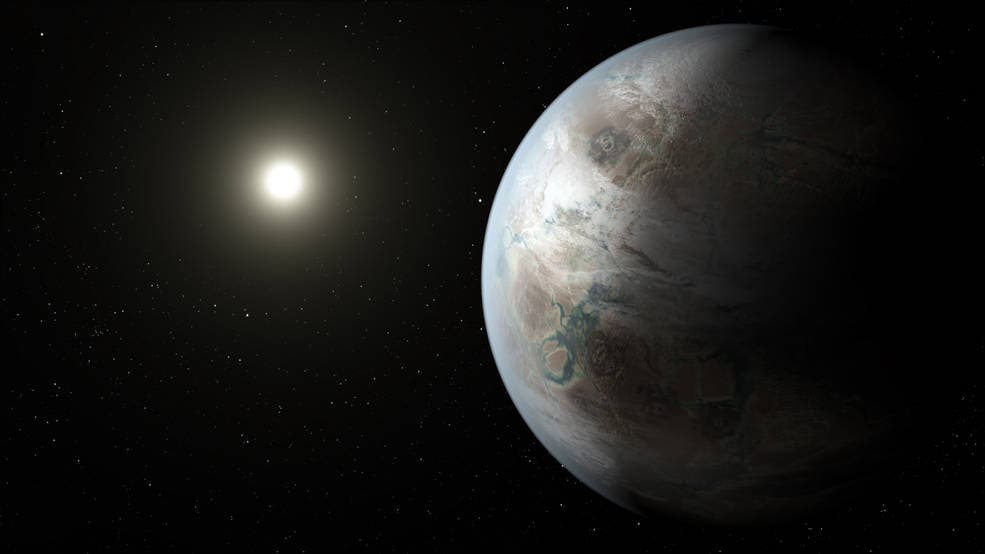Planet Kepler-452b: the first near-Earth-size world to be found in the habitable zone of a star that is similar to our Sun. This extremely exciting announcement was made by NASA today; while this doesn’t mean that the planet is inhabited, it does mean that it has many of the characteristics that our own Earth-Sun system has, and the odds of it hosting life seem significant.

Credits: NASA Ames/W. Stenzel
The first exoplanet orbiting another star like our sun was discovered in 1995; it seems almost incredible to think that just 21 years ago, exoplanets, especially Earth-like planets, were science fiction. Today, thousands of discoveries later, we know better.
The Kepler-452 system is located 1,400 light-years away in the constellation Cygnus, but the planet itself is quite old – 6 billion years old, 1.5 billion years older than our sun. While Kepler-452b is larger than Earth, its 385-day orbit is only 5 percent longer, and the planet is just 5% farther away from its star than the Earth is from the Sun.
“The discovery of Kepler-186f is a significant step toward finding worlds like our planet Earth,” said Paul Hertz, NASA’s Astrophysics Division director at the agency’s headquarters in Washington. “Future NASA missions, like the Transiting Exoplanet Survey Satellite and the James Webb Space Telescope, will discover the nearest rocky exoplanets and determine their composition and atmospheric conditions, continuing humankind’s quest to find truly Earth-like worlds.”
Its size is also known – Kepler-452b is 60 percent larger in diameter than Earth, being considered a “super Earth”. It’s a rocky planet just like Earth, but we don’t yet know its composition. What we do know is that while bigger, Kepler-452b has a 385-day orbit, only 5 percent longer than ours.
“We know of just one planet where life exists — Earth. When we search for life outside our solar system we focus on finding planets with characteristics that mimic that of Earth,” said Elisa Quintana, research scientist at the SETI Institute at NASA’s Ames Research Center in Moffett Field, Calif., and lead author of the paper published today in the journal Science. “Finding a habitable zone planet comparable to Earth in size is a major step forward.”

But as exciting as this announcement is, it’s important to remember that there is no clear indication that the planet might host life. We know nothing of the temperature and (potential) atmosphere of the planet, and these are decisive factors. It’s these two that will determine whether or not this is a true Earth twin, or only a distant cousin.
“Being in the habitable zone does not mean we know this planet is habitable. The temperature on the planet is strongly dependent on what kind of atmosphere the planet has,” said Thomas Barclay, research scientist at the Bay Area Environmental Research Institute at Ames, and co-author of the paper. “Kepler-186f can be thought of as an Earth-cousin rather than an Earth-twin. It has many properties that resemble Earth.”
But even finding a “cousin” of Earth is still remarkable, especially when you consider where we’ve come in 25 years; one can only wonder, where will we be another 25 years from now?
Was this helpful?



